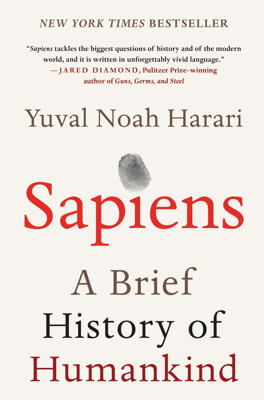Building Pyramids
Agricultural Transformation and Sedentary Living
The Agricultural Revolution marked a significant turn in the history of Sapiens, with lasting debates about its impact on human progress. It drastically changed societal structures by increasing human populations and leading to settled agricultural communities. Unlike the nomadic foragers who lived across expansive territories, farmers lived in reduced, densely inhabited areas. Their lives centered around fixed plots and residential structures, fostering a deep psychological attachment to their confined space.
Psychological and Architectural Changes
Settling down shrank physical territories but expanded the mental and architectural scope of human lives, embedding a newfound attachment to private property and personal space in human psychology. These changes contrasted sharply with the fluid territorial claims and communal living spaces of hunter-gatherers, emphasizing individuality and personal property.
Temporal Expansion and Future Concerns
Agriculture introduced a unique concern with the future, primarily due to the necessity of planning and the unpredictability of farming outcomes. This brought seasonal work cycles into human consciousness, making future-oriented labor an integral part of life. The stakes of agricultural success were high, with a single poor season potentially resulting in famine and disaster, thereby planting seeds of perennial anxiety about future prospects in the human mind.
Sociopolitical Dynamics and Development of Larger Societies
The surpluses generated through agriculture facilitated the growth of larger, more complex societies including cities, kingdoms, and eventually empires. However, managing these larger agglomerations required new ideological frameworks and imaginative orders to maintain social cohesion and cooperation.
The Role of Imagined Realities in Social Cohesion
Myths and shared beliefs played pivotal roles in binding together large groups of strangers within emerging cities and states. These shared beliefs were accepted as truths, forming the basis of coordinated efforts across societies. The myths were not static; they evolved to accommodate new social complexities introduced by agriculture and urbanization.
Contrast of Historical Myths: Code of Hammurabi and American Declaration of Independence
The chapter discusses key societal myths that have guided human civilizations, contrasting the Code of Hammurabi with the American Declaration of Independence. These documents, though millennia apart, both served to shape and justify societal norms and structures under the guise of divine or inherent truths. Where Hammurabi's code emphasized social hierarchy sanctioned by gods, the American Declaration preached equality and individual rights as unalienable truths endowed by a Creator.
Skeptical Examination of Human Rights and Equality
The discussion extends into a critique of modern human rights and equality as imagined realities rather than biological facts. These concepts, much like those in Hammurabi’s time, are based on human-made myths that serve to foster social cooperation but do not reflect any natural laws of equality or hierarchy inherent in biology.
Enduring Nature of Imagined Orders
Finally, the chapter emphasizes the intricate and often self-reinforcing nature of these imagined orders. Society, once structured around certain myths, invests heavily in perpetuating these beliefs through education, culture, and governance, making it exceedingly challenging to alter these foundational myths. The perpetuation and acceptance of these myths by the masses, including the elite, are crucial for the continued functioning of societal structures, from corporations to nations and beyond.
